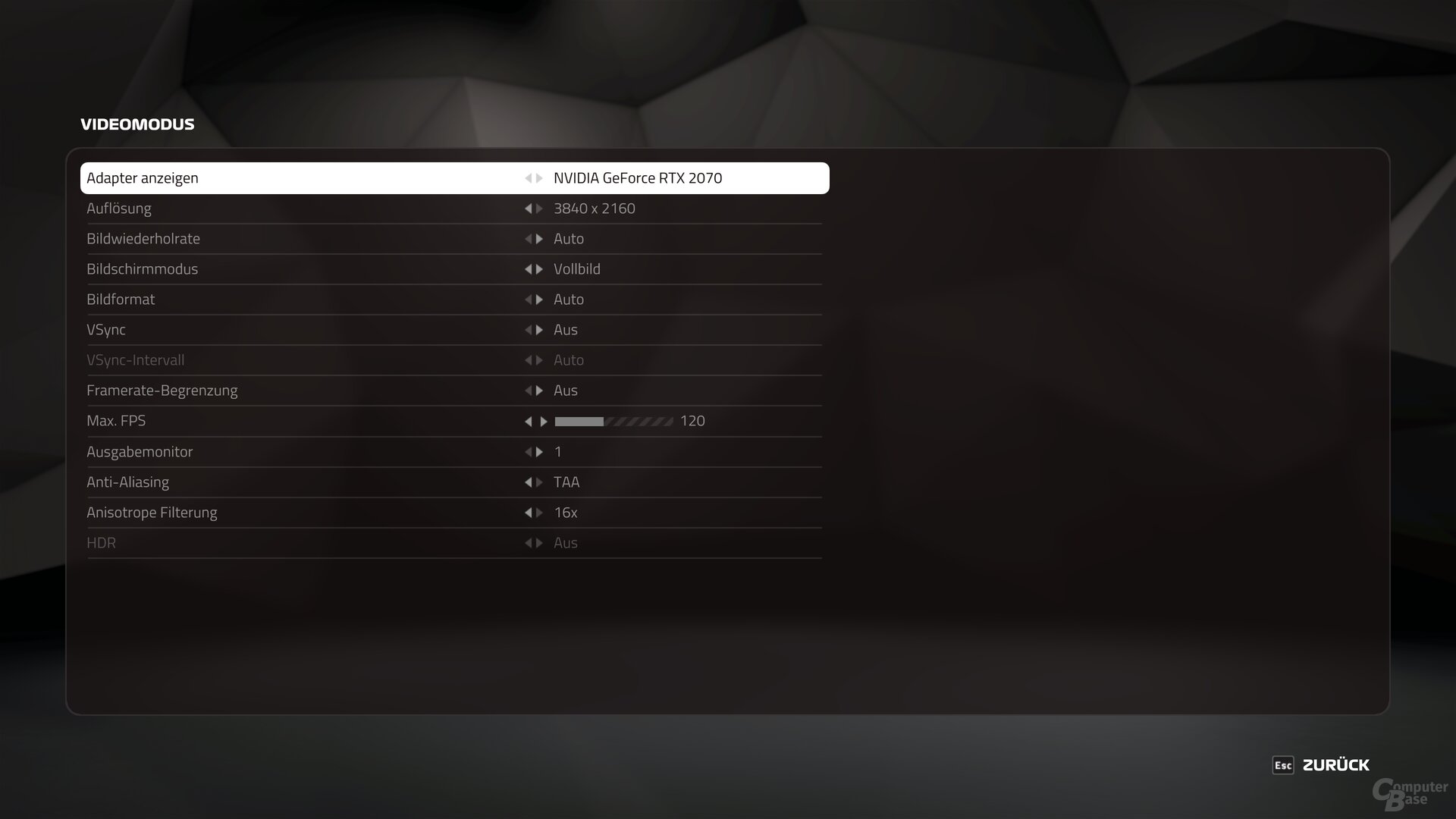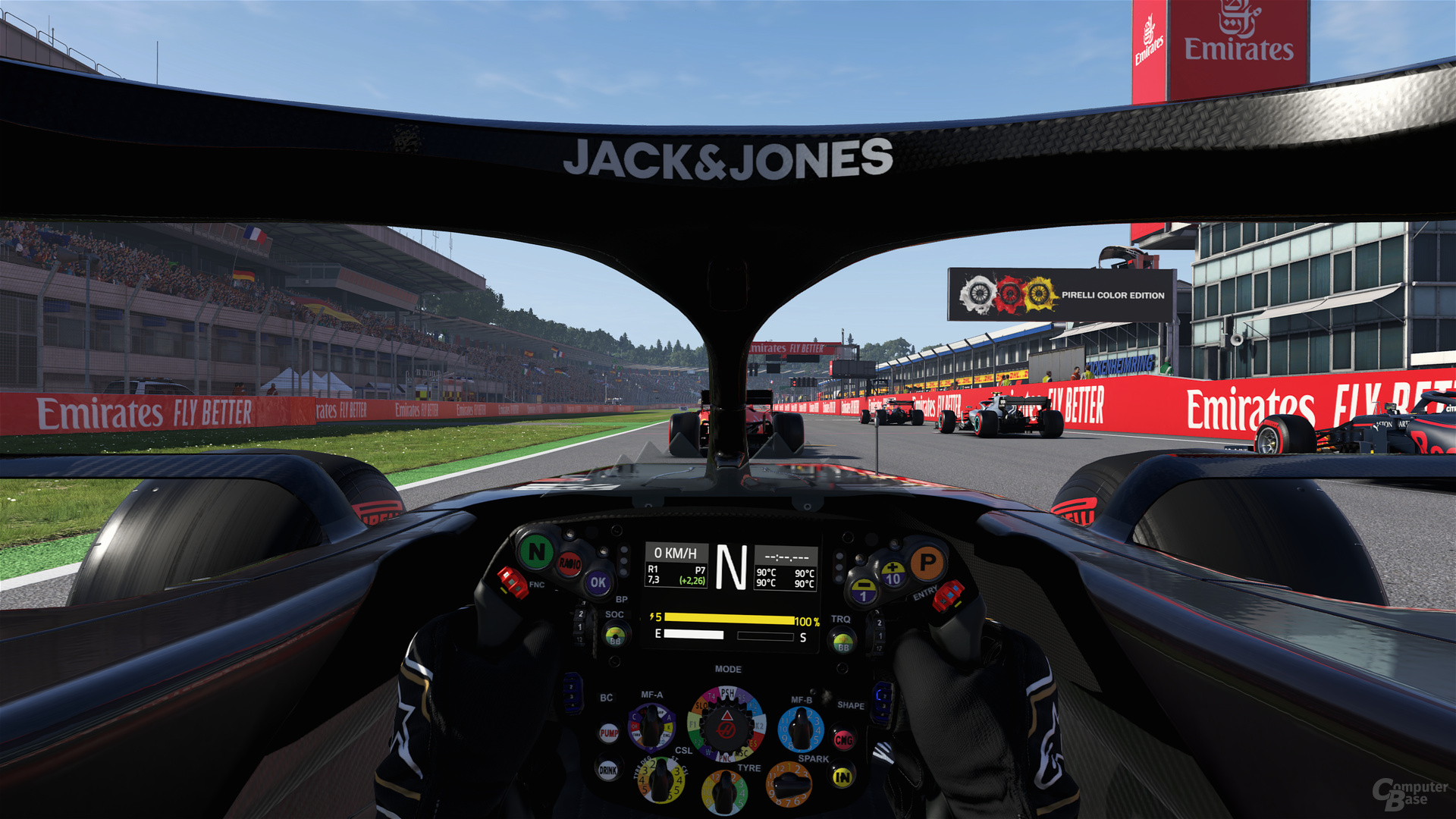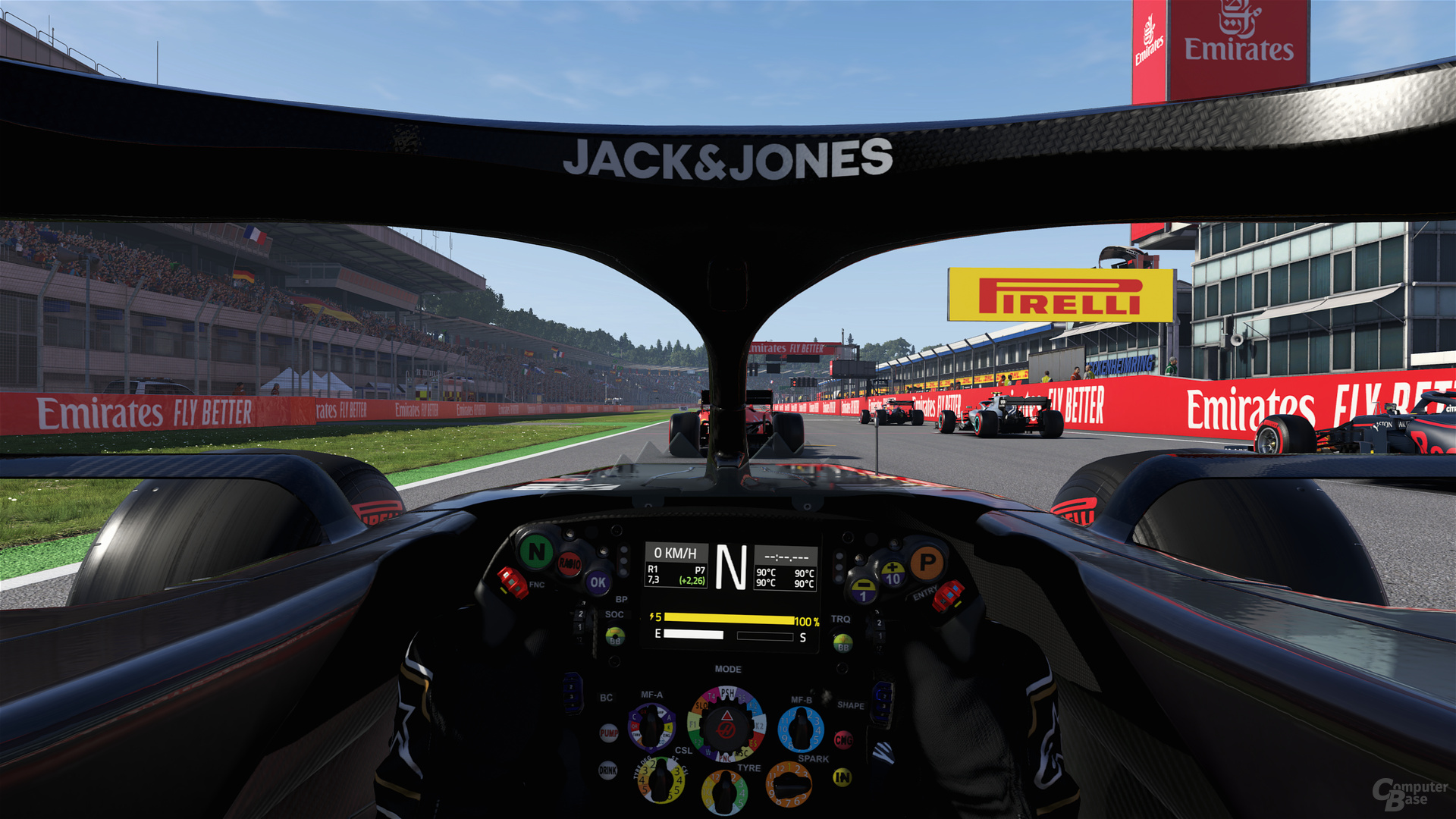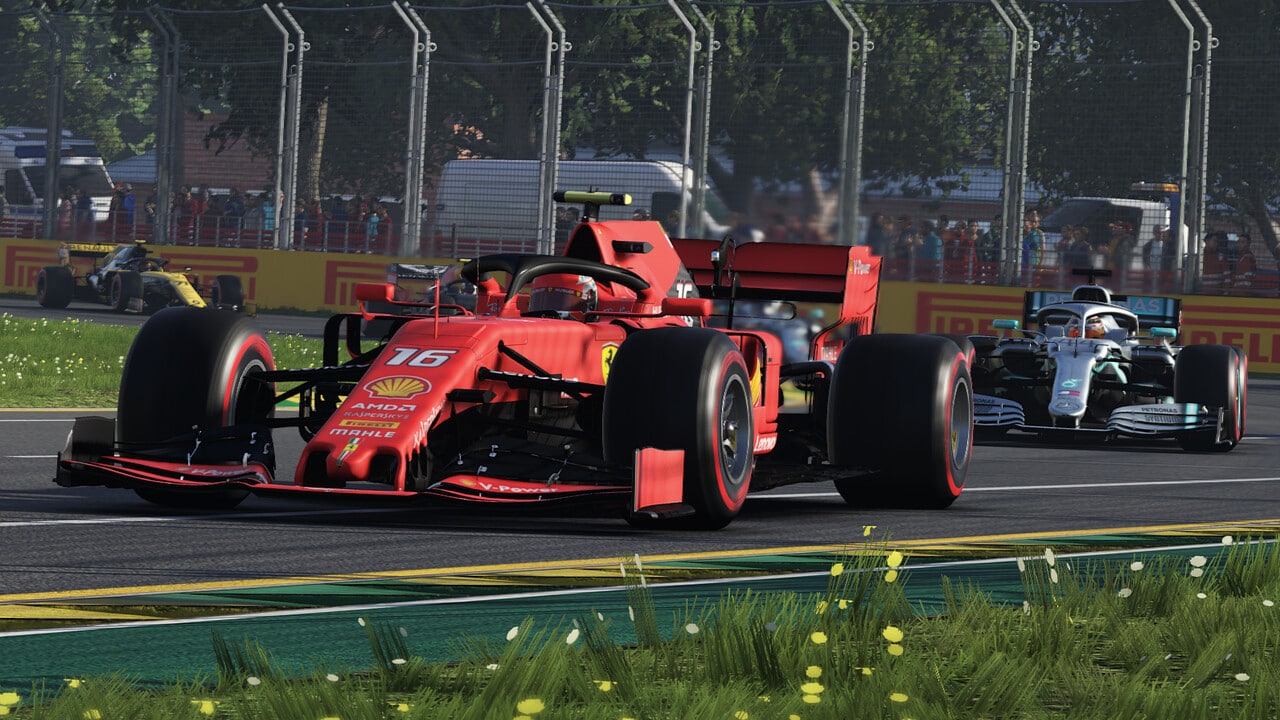– Formula 1 goes to the next round on the PC with F1 2019. The test shows a graphic that in some cases comes close to a TV broadcast without the need for a high-end computer. DirectX 12 is new at the start instead of as a beta patch. Most GPUs benefit from the low-level API in the benchmark.
F1 2018 follows F1 2019. The developer Codemasters continued to fine-tune it. In addition to the cars and tracks of the 2019 season, you can now also drive in the Formula 2 junior series, if only in the 2018 vintage Make racing game series. The graphic update is also expected to contribute to this, and this year it will be remarkable in places.
New lighting for sometimes deceptively real graphics
As usual, Codemasters uses the in-house EGO Engine 2.0, which was primarily improved in terms of lighting in F1 2019. Before the release, the developers advertised the graphics in the night races, for example on the Singapore city circuit. They gave the impression that there was virtually no lighting interacting with the scenery in the predecessor. Because unlike its predecessors, F1 2019 shows much more details, there are clearer differences between light and dark, the reflections are visibly better. In short: the night races in F1 2019 look really good. Ray tracing is not used for this.
But the latest iteration also looks a lot better during the day, which is particularly noticeable when comparing directly with F1 2018. Among other things, the tires show details on the surface for the first time – even if they are a little exaggerated. The textures are crisp. Everything around it, like your own team in the box or the paddock with interviews, has become more beautiful.
The graphics can really boast – once again – in the repetitions in the TV camera. The well implemented camera in connection with the optical improvements makes F1 2019 look deceptively real in places. But even when driving yourself, F1 2019 is not only the most beautiful racing game at the moment, but also one of the most beautiful titles in general.
DirectX 12 made it into the final game
It has long been an open secret that Codemasters is experimenting with DirectX 12 on the PC. In F1 2018, the low-level API was first shown in a beta version with a patch, but the result was still mixed. F1 2019 now supports DirectX 12 from day one and according to Codemasters the API DirectX 11 is preferable. The benchmarks will show in a later section whether this applies to AMD and Nvidia graphics cards.
A little bit of AMD and Nvidia technology in the game
Neither AMD nor Nvidia have announced that F1 2019 is in their respective development program. However, the game does use techniques from it. It supports AMD’s depth of field blur effect and Nvidia’s HBAO + ambient masking. Both can be selected and deselected in the graphics menu. If you take a look at the game’s configuration file, you will also find the entry “DLSS” there. Nvidia’s AI-based upsampling has not yet been integrated and has not yet been announced.
The technology test clarifies exactly how F1 2019 is doing on the PC. In addition to a look at the graphics menu and the duel DirectX 11 against DirectX 12, the main focus is on graphics card benchmarks.
The PC version of F1 2019 shows an extensive graphics menu. The variety of setting options is large, but the options themselves and the menu are kept simple. There is a freely selectable FPS limiter, but further convenience functions are missing. There are no sample screenshots, no downsampling or upsampling, no adaptive resolution and nothing else exciting – with one exception.

The last item in the graphics menu is “CS Geometry Culling”. In terms of name, this option ensures that the game can use the compute shaders on the graphics card to discard invisible geometry in order to improve performance without sacrificing appearance. This is something that Nvidia graphics cards have mastered automatically since the Maxwell generation. AMD accelerators, on the other hand, have problems with it – at least up to the navigation generation. It can be helpful here if the task is done manually, i.e. through the game, in the compute shader. There is a benchmark for the function further down in the section.
Five graphic presets and two choices
F1 2019 offers “Very Low”, “Low”, “Medium”, “High” and “Ultra High” five different graphic presets to adapt the optics to your own computer. In addition, there is a shadow option and, depending on the graphics card used, a further surrounding cover to improve the graphics.
All presets show a clearly visible difference. If you switch back from “ultra high” to “high”, you have to be satisfied with, among other things, significantly less detailed reflections and poorer coverage of the surroundings. The “Medium” level starts with a thick red pencil with regard to reflections, shadows and surrounding obscuration. Up to and including “medium”, F1 2019 is still visually appealing.

From “low” it is good graphics, because then the lighting changes massively and the details off the track are significantly reduced. “Very low” then saves again significantly texture and surface details.
Positive: The EGO Engine 2.0 also scales properly in F1 2019. Regardless of the graphics card, around 20 to 25 percent performance can be achieved with every detail level. The tuning potential is therefore high.
Details about the surrounding masking and shadows
As usual in the game series, F1 2019 relies on the in-house “ASSAO” for a Radeon graphics card, and “HBAO +” for a GeForce graphics card, which was developed by Nvidia but does not work as well. ASSAO is optically the better choice. The surrounding masking is literally a little thick in places, but more objects are recorded than with HBAO +. Since ASSAO does not cost performance compared to HBAO + on an AMD or Nvidia graphics card, ASSAO should be used throughout.


Regardless of the preset selection, the “SSRT shadow” option is always deactivated. This is not very tragic, since there are no visible differences. However, activating them hardly costs any performance.
Geometry culling using compute shaders
In its current form, the culling option is simply pointless. At least on AMD and Nvidia GPUs, the ability to reject geometry using the compute shader does nothing or is counterproductive. Whether the option is on or off, for example, hardly matters on a GeForce GTX 1080 or GeForce RTX 2070. The performance gets worse as a result of the measurement inaccuracy.
- CS Geometry Culling – 1,920 × 1,080
- RTX 2070 @ CS Culling “Off”
- RTX 2070 @ CS Culling “On”
- RX Vega 64 @ CS Culling “Off”
- GTX 1080 @ CS Culling “Off”
- GTX 1080 @ CS Culling “On”
- RX Vega 64 @ CS Culling “On”
- CS Geometry Culling – 3,840 × 2,160
- RX Vega 64 @ CS Culling “Off”
- RTX 2070 @ CS Culling “Off”
- RTX 2070 @ CS Culling “On”
- RX Vega 64 @ CS Culling “On”
- GTX 1080 @ CS Culling “On”
- GTX 1080 @ CS Culling “Off”
On the other hand, performance even drops on a Radeon RX Vega 64: If the option is switched on, the frame rate on a Radeon RX Vega 64 in Full HD is reduced by 28 percent, in Ultra HD it is 6 percent.
It is therefore not clear why the option exists in its current state. It is conceivable that Intel’s (future) GPUs can benefit from this. On a GeForce and especially a Radeon, the menu item should definitely remain deactivated – as provided by the standard setting.
On the next page: GPU benchmarks, DX11 vs. DX12 and conclusion
















